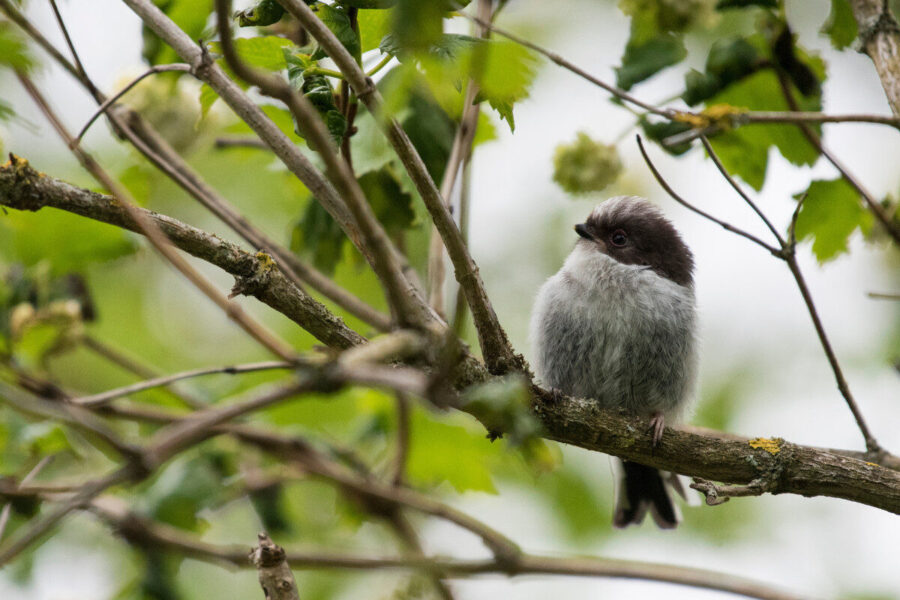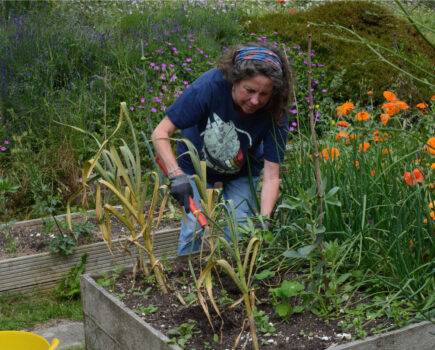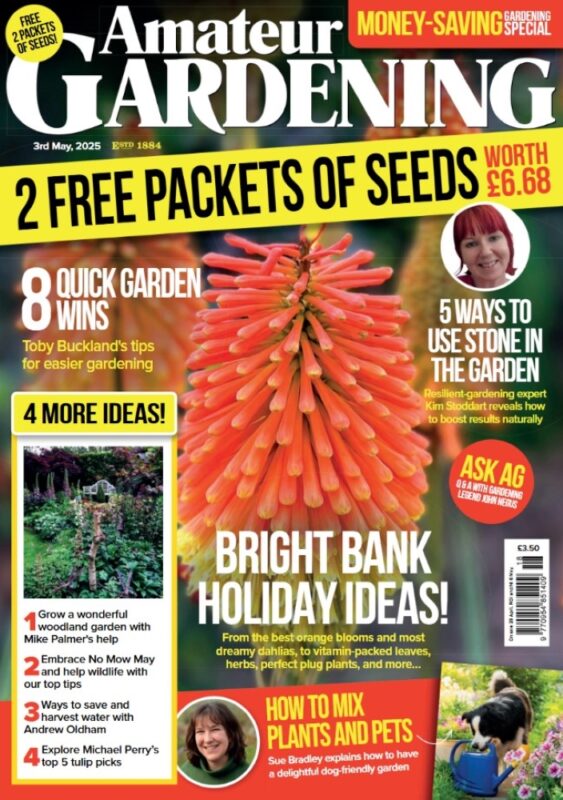Find out how to help young birds in your garden at this time of year with the RSPB’s top tips
Coming across these juvenile birds can quite literally feel like spotting a new species – so prepare to find a few new faces in your garden this month! If you are fairly knowledgeable about what birds regularly visit your space and have come to know their different colours, gaits and plumage, then things can get a bit more confusing at this time of the year!
Blackbirds which aren’t black, robins without red bibs and non-speckled starlings can throw your detection skills off somewhat. But the generally duller colouring of these fledglings begins to make sense when you consider that they are currently in the most precarious phase of their lives.
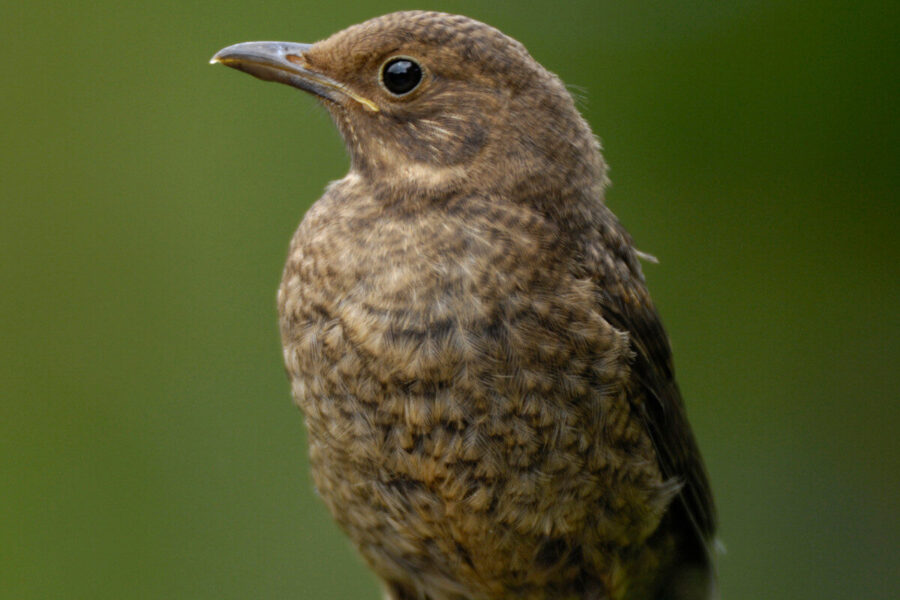
They’ve just been thrust into the wide world. Flying is still being learned – and for many, they also need to keep track of their parents because food is still being provided by them. Being less colourful and blending in a little more helps protect them, both in terms of camouflage but also status. They are learning the ropes and don’t want to be mistaken for an adult bird trespassing on another bird’s territory.
There’s a lot to learn all at once, which explains why you’ll find some birds that aren’t as fast as you’d expect to scuttle away when you walk towards them, and who generally just appear a little confused!

A bird in the open is a sure sign of a recent fledging, and one struggling to fly much more than a few feet at a time. They are literally learning on the job, so a garden which is pet-free and has lots of cover is a real bonus for these youngsters.
The juveniles will get their adult feathers within the next year. Some are quicker than others – Long-tailed Tits for example, have a full moult and are in adult plumage within a few weeks of leaving the nest.
The first instinct of most people who see a young bird on the ground is to help out in some way. The youngster looks stranded and/or abandoned and it makes us want to do something. But honestly, it’s best to take no action.
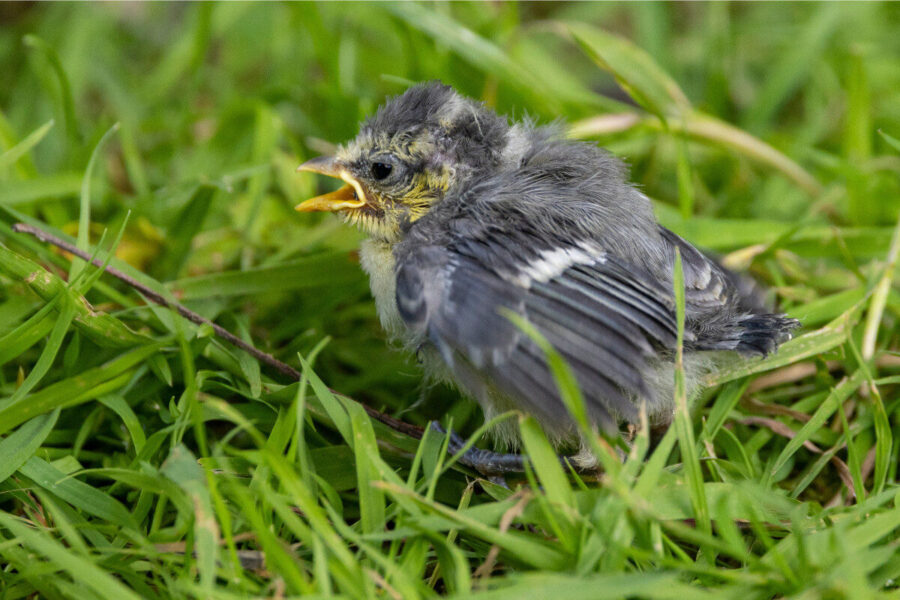
Parent birds will be nearby – listen for a few minutes and you’ll no doubt pick up some urgent calling. They urge and cajole the young birds – encouraging them to follow and fly and find safe spots, generally learning from their actions.
If the bird looks in some immediate danger – if it’s near a busy road for instance – it’s OK to move the bird to a higher, safer spot away from the threat, but still in close proximity for the parents birds to find it.
………..
There’s more details of what to do if you spot a grounded bird, plus information about fledglings and how to ID birds at www.rspb.org.uk
…………
Q&A
Q The food I’m putting out in my hanging feeder isn’t being touched – what’s happened to my birds?
A. They are probably just using more of the natural food supplies around at this time of year. Maybe take down the hanging feeder for a few weeks or only put out small quantities of food and change it regularly. Don’t forget to clean it thoroughly every week as well.
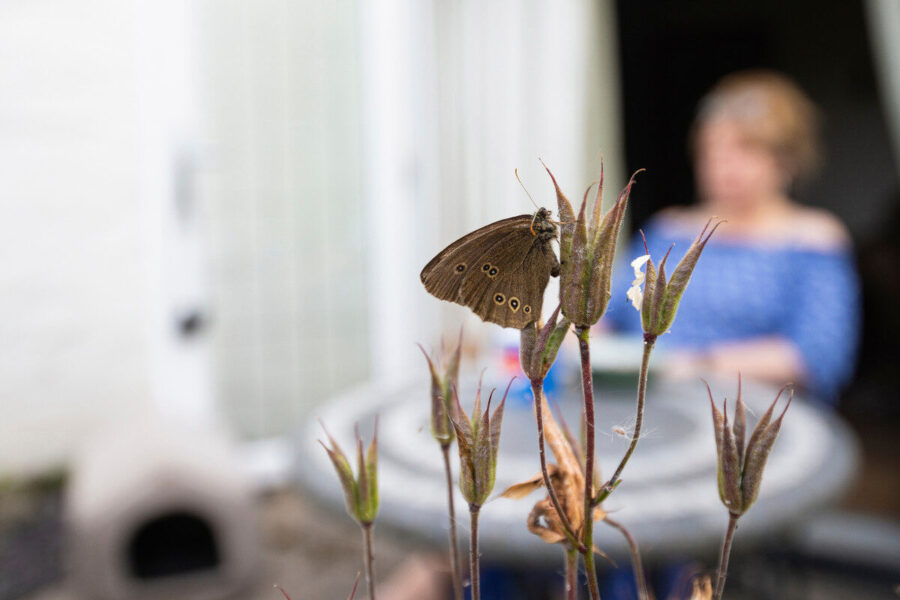
Q. Why do I still have blackbirds nesting in my garden – isn’t it late for this?
A. Some birds have multiple broods over a season – Blackbirds often have two, even three, so you may still find them nest-building or feeding broods, along with a number of other species. This can go on for a few weeks yet!
Find more tips, advice and articles like this at the Amateur Gardening website. Subscribe to Amateur Gardening magazine now

